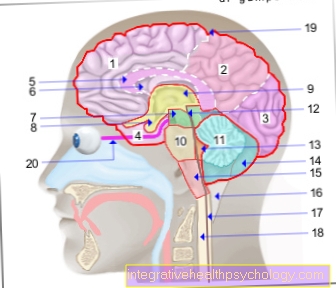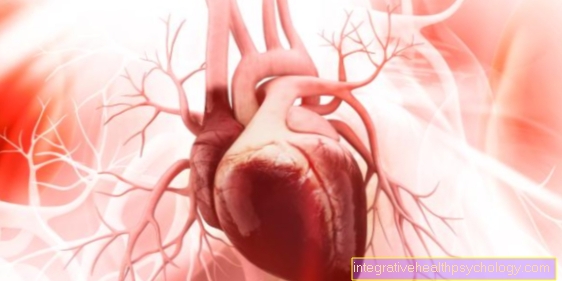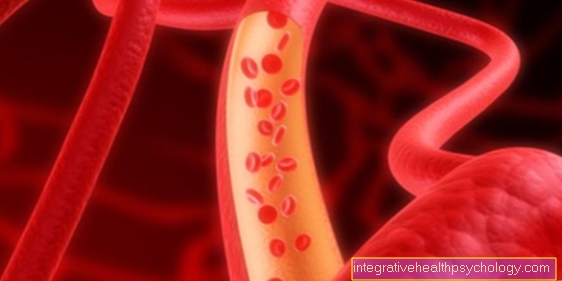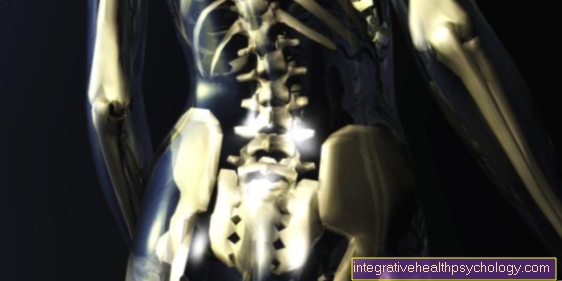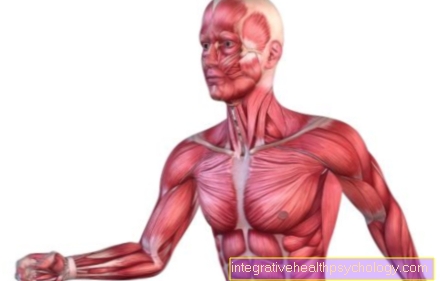Hormone replacement therapy in menopause
What is hormone replacement therapy?
The human body produces a large number of different messenger substances. Some of these hormones are only produced at certain times or in certain phases of life.
The sex hormones of women, for example, decrease rapidly during the menopause and this sudden loss of the hormones leads to some symptoms, which in some women are so pronounced that the menopause becomes a disease value.
However, the hormones can be replaced artificially so that the loss of the hormones occurs less suddenly and the woman can adjust to it. This is called hormone replacement therapy.

When does hormone replacement therapy make sense?
The most common reason for hormone replacement therapy is onset of menopause.
Many women experience hot flashes, insomnia, mood swings, and other symptoms during this phase. These symptoms are due to the sudden drop in hormone production and can therefore be treated with artificially supplied hormones.
These artificially supplied hormones are mostly estrogen preparations. However, this therapy is only recommended for severe symptoms.
Hormone replacement therapy is not recommended as a protection against diseases such as osteoporosis, as the side effects are too strong with long-term use.
Other reasons for hormone replacement therapies are various diseases that lead to restricted hormone production even in younger years. An early removal of the ovaries also leads to a kind of menopause (menopause), which can be prevented by hormone replacement therapy.
There is also hormone replacement therapy for men. In this case, testosterone can be substituted as men can experience a similar change in hormone production with age.
During gender-changing interventions in transgender people, hormones of the desired gender are also artificially administered.
You can also read more information on this topic: A woman's hormones
Preparations for hormone replacement therapy
The hormones used during menopause are mostly estrogens and progestins.
Estrogens can be given in several forms:
- The micronized estradiol is a natural estrogen and can be given through the digestive system and the skin.
- Estradiol valerate is a precursor to estradiol and is given orally (as a swallowable tablet).
- Conjugated estrogens are obtained from mare's urine and can also be taken in tablet form.
- Estriol is a weak but natural estrogen. The standard dosage does not work against osteoporosis. Estriol can be used as an ointment form directly in the genital area and counteract the breakdown of the mucous membrane there.
- Ethinyl estradiol is a very strong, artificial estrogen, which is only used for contraception and therefore not used during menopause.
Each of these ingredients is sold by different retailers under different names. The most common drug prescribed is Presomen Compositum (with conjugated estrogen, among others). The preparations Kliogest and Activelle (contain, among others, estradiol) and Climopax (with conjugated estrogen) are also frequently used. The patch that is most commonly written on is Estragest. In addition to the estrogens, women are given the antagonist progestin. This is not necessary after the uterus has been removed.
During the menopause, not only does hormone replacement therapy help to alleviate the symptoms, but also a number of other medicinal and homeopathic therapy options. Find out more at: Menopausal drugs or homeopathy for menopause
Side effects of hormone therapy
Hormone therapy is drug intervention in many natural processes. Since this increases the risk of some diseases and side effects, this therapy should only be used for severe symptoms and only for as long as is absolutely necessary.
The permanent stimulation of the uterus with estrogens can lead to a degeneration of the tissue. This can lead to cancer of the lining of the uterus. The risk of developing breast cancer or ovarian cancer also increases.
Since the hormones also have an influence on the circulatory system, thromboses, strokes and heart attacks can occur. Since these side effects are potentially life-threatening, hormone replacement therapy should only be used under certain conditions and in low doses. The likelihood of side effects increases with the duration of use.
More common, but less serious, side effects are easy bleeding, similar to menstruation, and a feeling of tightness in the chest.
Gallbladder disease also increases the risk. Older women also have a higher risk of developing dementia. Studies have also shown that women who take hormone preparations are slightly more likely to develop lung cancer and die.
You can read more about the side effects of hormone replacement therapy here: Symptoms of cervical cancer
Intermenstrual bleeding
Short-term side effects of hormone replacement therapy include intermenstrual bleeding. These are similar to a normal menstrual period and do not represent any danger. The bleeding occurs because the hormones estrogen and progestin influence the lining of the uterus. In addition, many menopausal women have irregular menstrual bleeding. The severity of the bleeding can also vary greatly. Therefore, the bleeding is not always a side effect of the therapy.
Weight gain
The rumor that hormone therapy leads to weight gain has been around for many years, but it is really just a rumor. Many women gain weight during the menopause and this is completely independent of hormone therapy. The body's need for calories decreases with age and most people do not adapt their diet to the new metabolic state, which in turn leads to weight gain. Not only women are affected by this. The extent to which the weight change occurs varies from person to person.
Hair loss
Hair loss is a symptom that can have many causes. During menopause, many women suffer from increased hair loss, regardless of hormone therapy. However, iron deficiency can cause anemia in women with heavy intermenstrual bleeding. The body struggles to make up for the loss of blood. The body needs iron for the production of the oxygen transporter hemoglobin. If there is a deficiency, body structures that are not as important as hair are poorly supplied and the hair roots break. This symptom disappears completely as soon as the body has enough iron again.
The following article continues on this topic: Hair loss in women
Breast cancer
There are some cells in the breast and in the uterus that have docking points for estrogens. These docking points lead to growth stimulation on contact with estrogens. If the hormone therapy is permanently irritated, the cells can grow and change in an uncontrolled manner. These changes can even lead to cancer. Especially when breast cancer therapy has already been overcome, hormone therapy can mean a return of the tumor. Regular checks are important here and the gynecologist must absolutely know about the medical history of the woman concerned.
You can read more about this clinical picture in the following article: How do you recognize breast cancer?
Contraindication - When should hormone replacement therapy not be carried out?
Some diseases directly preclude treatment with estrogens. These include breast cancer and uterine cancer, as the hormones here can lead to increased tumor growth. Coagulation disorders and thromboses are also an exclusion criterion, since the hormones increase the risk of thrombosis. If you have vaginal bleeding, the cause of the bleeding must first be determined before hormone therapy can be started. For some liver diseases, hormone replacement therapy may also not be possible.
How long can you have hormone replacement therapy?
Hormone replacement therapy involves serious interference with some body functions. The duration of therapy should be kept as short as possible, as the risk of side effects increases with the duration of use and with the age of the woman. With therapy lasting longer than five years, some of the risks remain increased even after discontinuation.
What should be considered when stopping?
Hormone replacement therapy should only be carried out for as long as medically necessary, as the likelihood of side effects increases the longer it is taken.
The first attempt to discontinue therapy can be started after about two years. This should be tapered off over a few months. This means that the dosage is reduced first. This is reduced further and further and can be increased again if the symptoms flare up again. In this way, the woman's body can adapt to the falling hormone levels. Some women no longer experience symptoms because the therapy can bridge the difficult phase, but some women also report that the therapy only postponed the problems.
The exact effects of hormone therapy after discontinuation are not fully understood. However, studies have already shown that the risk of developing breast cancer is higher even after the end of five years of therapy than in women without hormone replacement therapy. In older women in particular, stopping the medication should be considered as early as possible.
When does hormone replacement therapy take effect?
The onset of action of hormone replacement therapy depends on the type of application. Tablets must first be absorbed through the digestive tract and there. Then they have to go through the liver, where a lot of the active ingredient has already been captured. Active ingredients that are given through the skin do not have to go through the liver first and can therefore have a more direct effect. At the beginning of therapy, a certain level must be built up in the body so that the effect does not start immediately with the first tablet, but lasts for a few days.


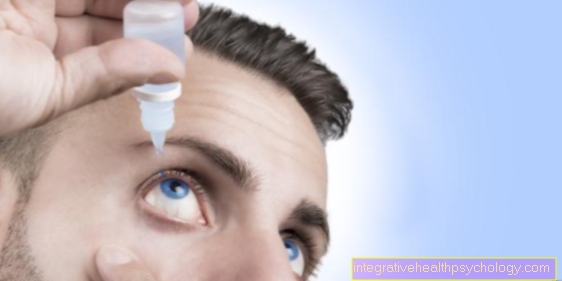

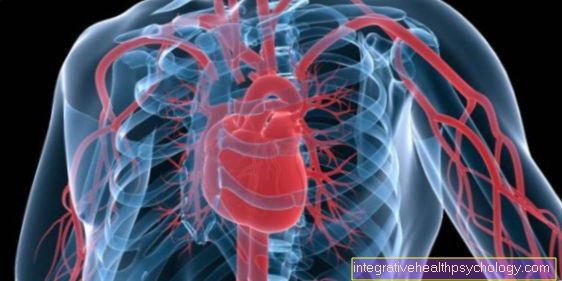



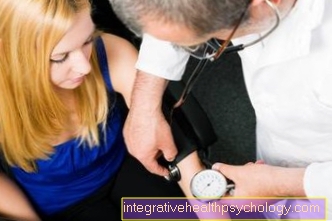
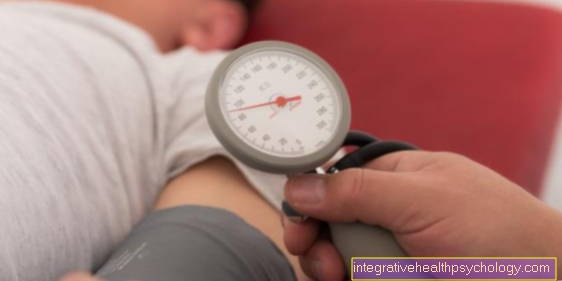



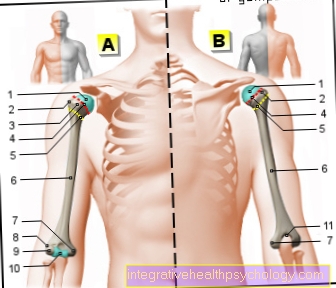
.jpg)
